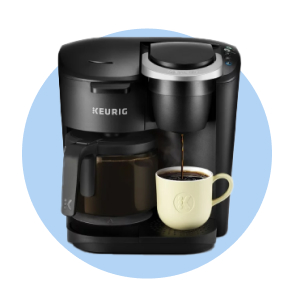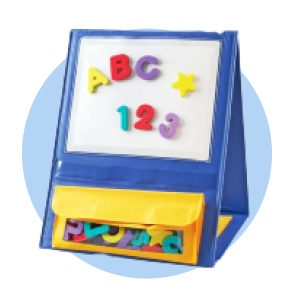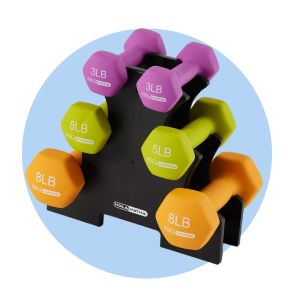
Making Smarter Business Decisions: How Data Can Be the Key
Essential metrics & how to use them
“Data-driven decision-making” may sound like a modern concept, but entrepreneurs have been using data to guide their next steps for as long as business has been done. The only difference now is that modern technology makes it much easier to collect, arrange and visualize everything from individual data points to decades-long trends. The question is no longer if you can use data to make better business decisions but how. We’ve assembled this beginner-friendly guide to introduce you to how using data can help your business and which metrics you may want to start with.
Looking for even more resources to help grow your organization? Browse the Walmart Business content hub to find marketing tips, financial guides and more.

How data can help your business
Virtually every area of your business can benefit from data-driven decisions. Here are a few examples:
A hair salon could compare the total profit from different services, including the cost of materials, labor and add-on options to refine its pricing.
A software consulting firm could compare how much business it has attracted from different advertising campaigns, then focus on the most profitable approaches.
A construction company could conduct an employee survey to determine overall worker morale and use the findings to make changes to improve worker retention.
None of this is to say that you should disregard your instincts or “gut” as a business leader. After all, you observe tons of data points every day you run your business, whether or not you actively think about them that way. Formal metrics should support and expand your expertise, not override it.
Considering investing in your business’s technology? Read our survey on how different leaders prioritize tech spending.
5 key metrics & how to use them
Discrete pieces of data may mean little by themselves. Fortunately, many well-established metrics—often called key performance indicators (KPIs)—can help you turn those individual data points into practical insights.
Remember that the following metrics are just examples. Since every business is different, the most valuable types of data for each business will differ, too. The important thing is to adopt a data-driven approach. Then, you can experiment, measure the results and refine your process to find the best approach for you.
1. Net sales revenue
Net sales revenue is how you track how much money your business is bringing in, which is an essential measure of its overall health. It may make sense to break this information down in different ways depending on how your business generates its income—quarterly, monthly or possibly even daily—but understanding your overall revenue will help you get that big-picture perspective.
You can calculate your net sales revenue by adding together your gross sales, then subtracting any discounts, returns and associated costs.
2. Working capital
Your business needs a certain amount of money on hand to cover unexpected expenses, but keeping too much of your finances as cash means you’re missing out on opportunities to invest in your growth. Keeping a keen eye on your working capital will help you stay ready for a rainy day without limiting your potential.
To arrive at your working capital, take the total of your current liquid assets, then subtract your current liabilities (loans, invoices, payroll and so on).
3. Return on ad spend (ROAS)
It’s essential to track the return on investment for any part of your business. We’ve decided to demonstrate that principle with advertising, because it can sometimes be difficult to tell what impact an ad campaign has on your business. If you can determine your ROAS for a campaign, you know a big part of how successful it was and how to compare it to similar efforts.
Determine your ROAS by totaling up the revenue you can attribute to an ad campaign and dividing it by the cost of that campaign. A score of 4—that is, a return of $4 for every $1 spent—is typically considered a good ROAS. Note that it’s not an exact science; not all of the customers or clients you bring in may have been influenced by your advertising. Digital ads can track this information automatically. Otherwise, the best way to find out is to ask!
Learn more helpful Digital Marketing Tips for Small Businesses, including how to adopt a performance mindset and build toward conversion.
4. Customer lifetime value (CLV)
Loyal customers don’t just make you feel good—they generate more value for your business. So, how do you determine how loyal your average customer tends to be and how much impact they have on your revenue? One way is to find your CLV.
To calculate this metric, you’ll also need to have several other important figures on hand. First, multiply your average transaction value by the average number of transactions in a year and then by your average customer retention. Finally, multiply that number by your profit margin. Then you’ll know what your average customer is worth to your business, at least in a monetary sense.
5. Employee turnover rate
Whether you just have a handful of employees or a whole bustling office, you need a way to track how satisfied they are with their jobs. After all, happy employees are more likely to go the extra mile to help make your business a success. One of the simplest ways to determine how your staff feels overall is by looking at your employee turnover rate.
You can calculate your employee turnover rate by adding up the number of people who have left your business in a certain period then dividing it by the average number of employees you had in that period. Multiply that figure by 100 and you have your employee turnover rate as a percentage. Tracking this rate as your company grows can help you spot burnout or team frustration before it becomes a problem you can’t fix.
Find more ways to retain employees and convert customers in Walmart’s 10 Rules for Building a Better Business.
Find the best fit for your business
Paying attention to your numbers is an important step in building a more sustainable business. One of those numbers is how much you spend on the supplies you need to create a great workplace—and if you sign up for a Walmart Business+ membership, you’ll unlock instant access to Spend Analytics to help you track each purchase.
Walmart Business+ doesn’t just help you track your spending. It enables you to do more with each dollar through free shipping with no order minimum1 and free delivery from local stores, $35 minimum.2 You’ll even earn 2% in Walmart Business Rewards on orders $250 or more.3


Limited-time offer
Unlock your special promo code
Stay informed on Walmart Business news & get $20 off a $100 purchase!1
1Minimum order of $100. Promo code can be used one time & may not be combined with other offers. Offer not transferable & void where prohibited by law. Customer responsible for all applicable taxes. Offer expires 12/31/2025 at 11:59pm PT. Further restrictions apply. See terms at checkout for details. Promo code offers available in limited quantities. While supplies last.
1 Excludes most Marketplace items, freight and certain location surcharges.
2 Restrictions apply.
3 Rewards can only be used toward future purchases on Walmart Business. Additional terms apply.
Exciting news awaits
Hear firsthand about new products, features & promotions.
By clicking submit, you agree to receive emails about Walmart Business and acknowledge you have read and agreed to our Terms of use and Privacy Policy.










